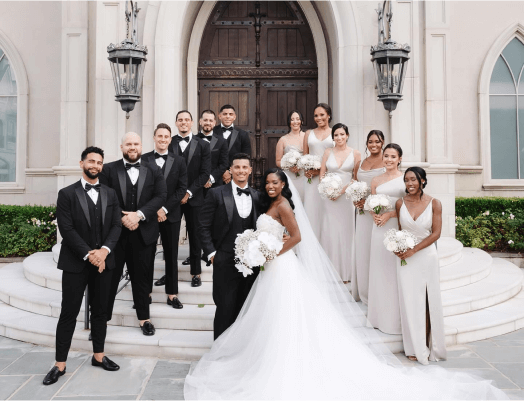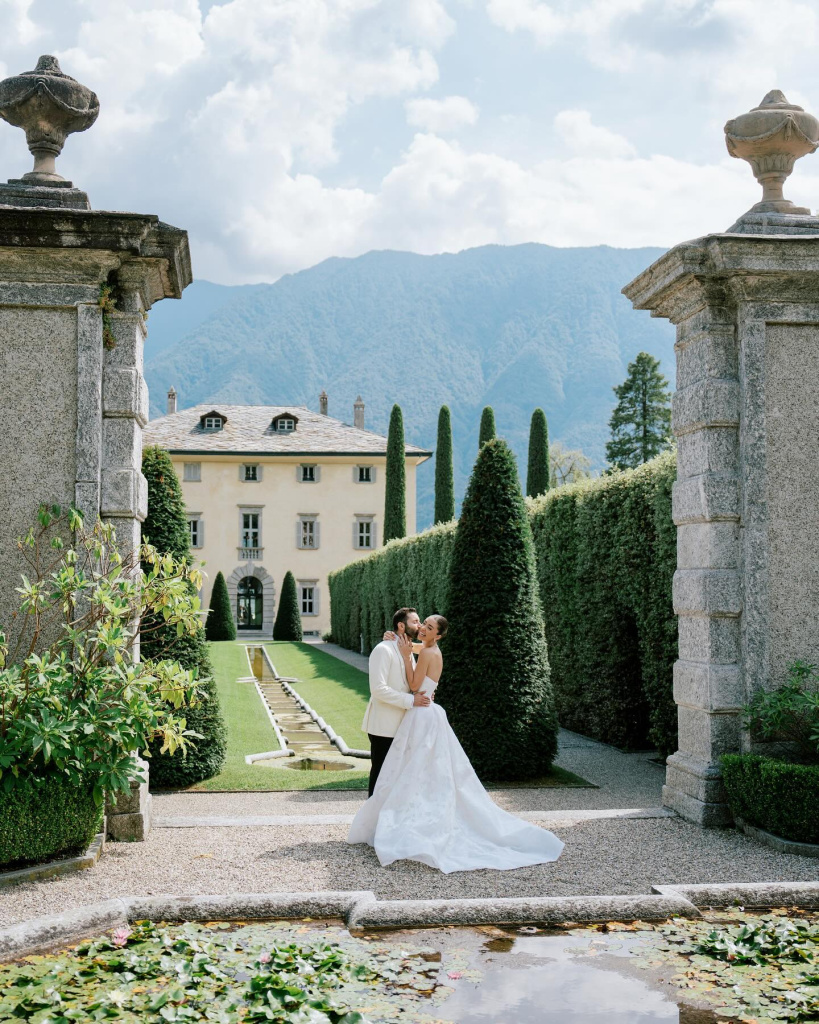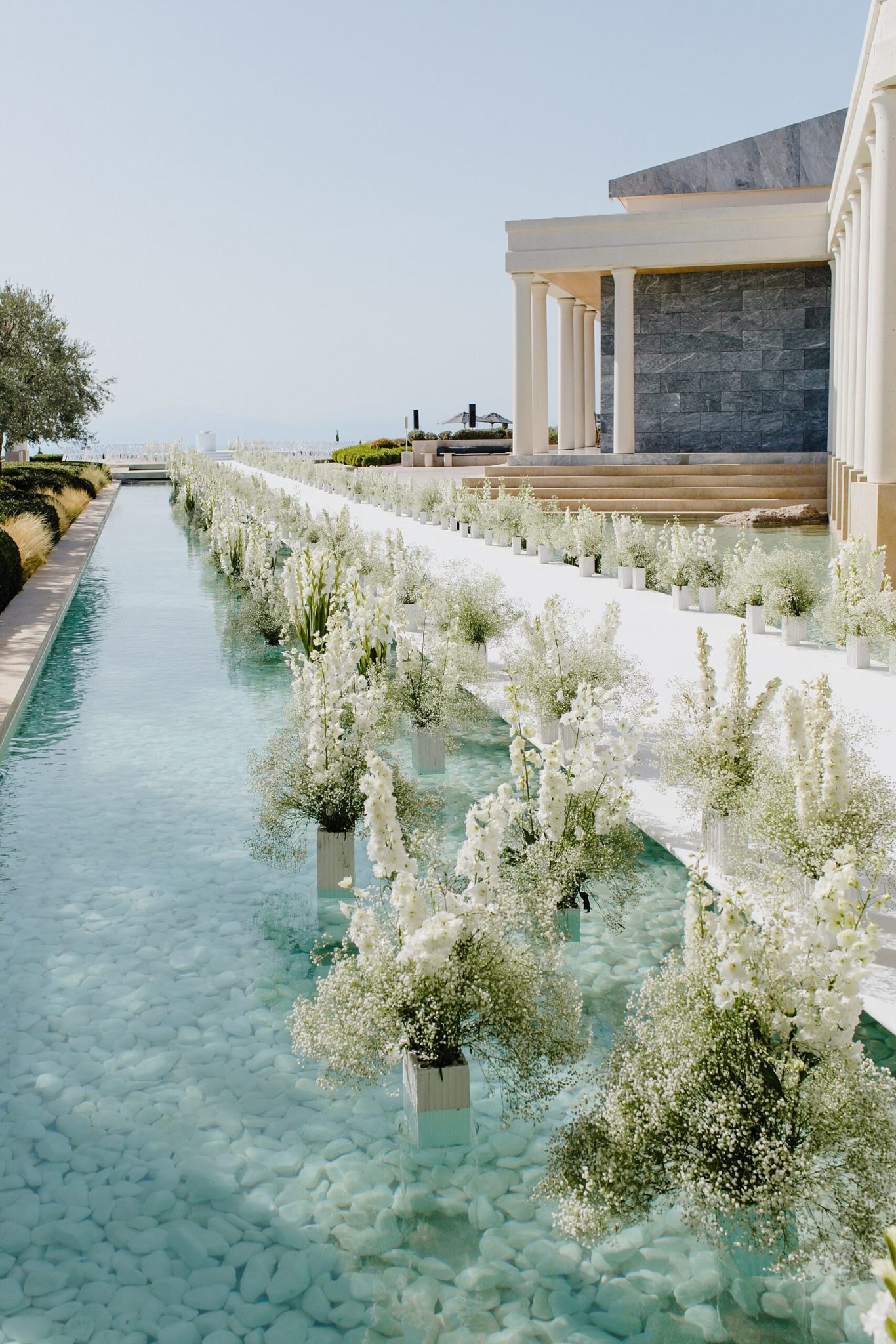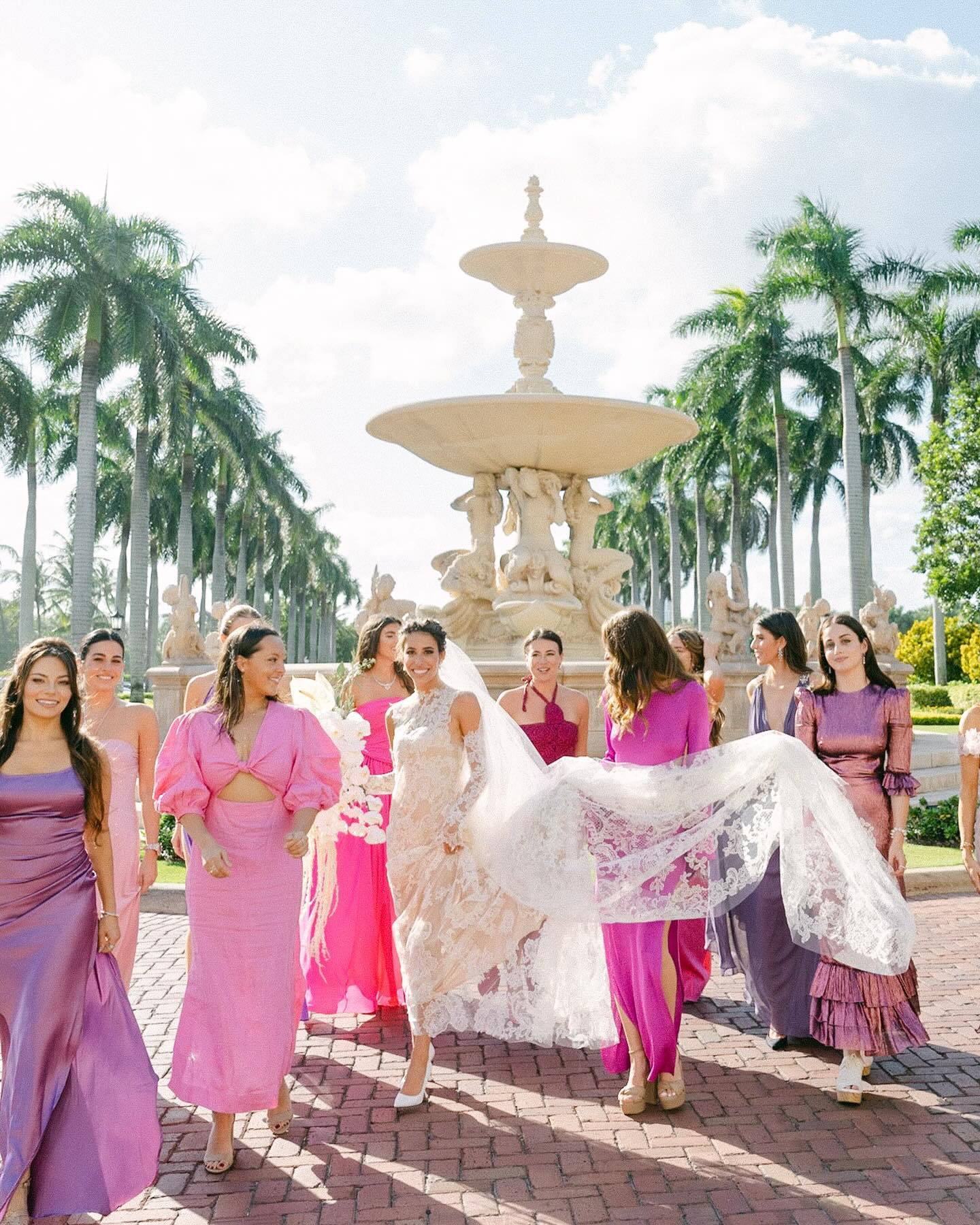Cultural Traditions: Incorporating Italian Customs into Your Como Wedding
- Author: Natali Grace Levine
- Reading time: 6 min 44 sec
- Publication date: 04/27/2024
- Updated: 06/23/2025
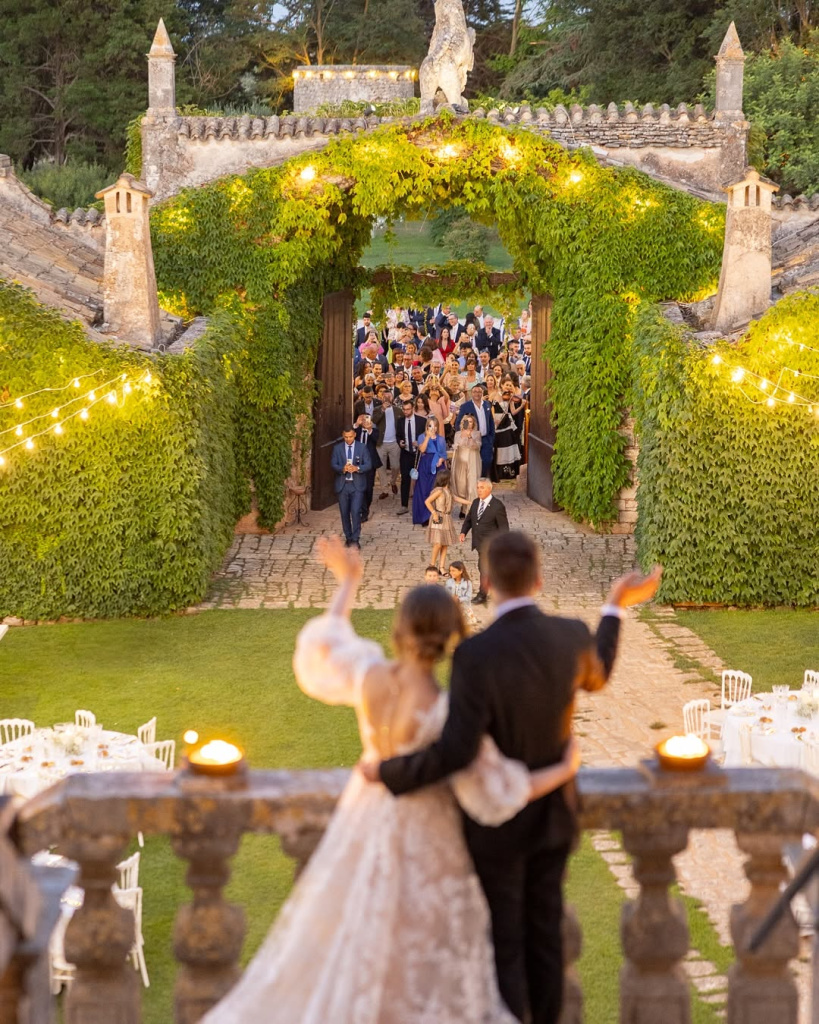
Planning a wedding in the enchanting region of Lake Como provides the perfect opportunity to incorporate beautiful Italian wedding traditions and customs into your special day. The serene beauty of Lake Como, coupled with Italy's rich cultural heritage, creates a magical backdrop for a wedding that's as picturesque as it is memorable. From charming old-world customs to delightful culinary feasts, integrating Italian traditions can make your celebration uniquely vibrant and deeply personal. Let's explore how you can bring these time-honored traditions to your wedding, ensuring a day that you and your guests will cherish forever.
Find Your Perfect Wedding Vendors
Italian Wedding Traditions to Incorporate into Your Big Day
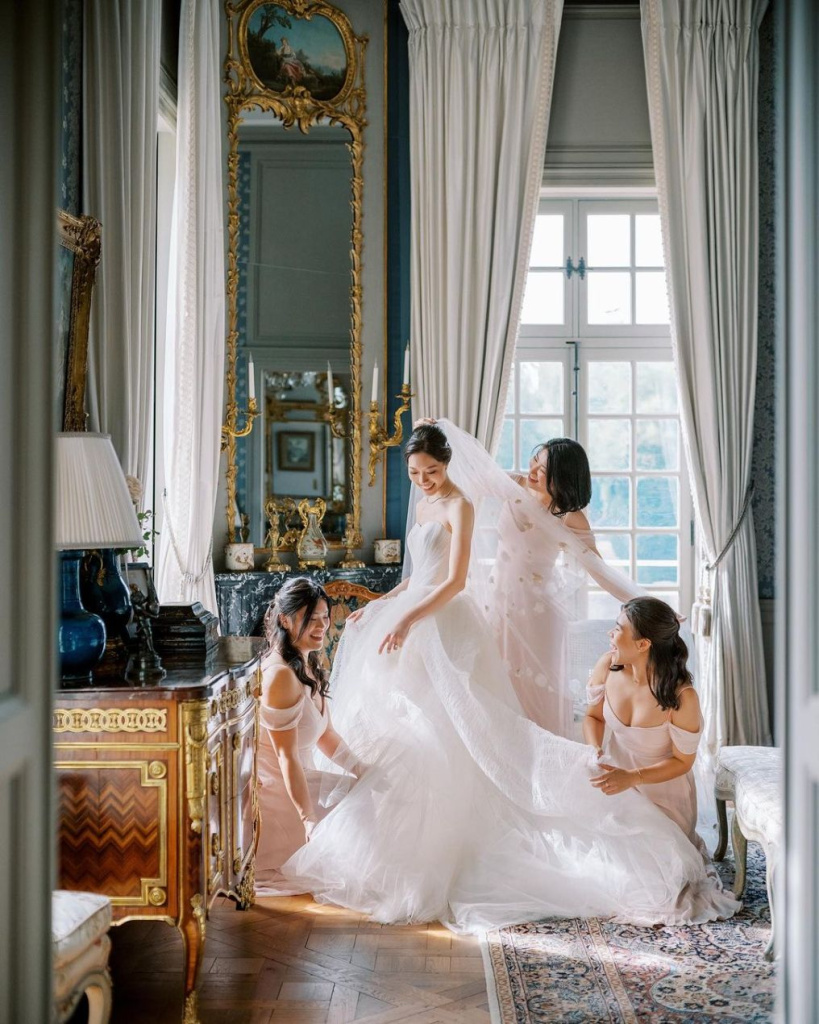
Lake Como, with its pristine waters and dramatic landscape, provides a storybook setting for your wedding. Here, you can seamlessly blend your celebrations with traditional Italian customs, making your big day unforgettable. Let’s delve deeper into each tradition and discover how you can weave these beautiful customs into your Lake Como Italy wedding.
La Serenata
The serenade is traditionally performed by the groom beneath the bride's window, a practice that has roots in medieval Italy where serenades were common among courting rituals. Consider having the groom arrive in a beautifully decorated boat, serenading the bride from the water, which can add a unique twist to this age-old custom. A local ensemble could accompany him with traditional string instruments, providing a soundtrack that resonates across the tranquil lake, making it a memorable kickoff to the wedding festivities.
Bridal Veil
The bridal veil was believed to disguise the bride and protect her from evil spirits in ancient Rome, a notion that persisted through the ages. Today, it serves as a beautiful symbol of the bride's purity and the commencement of something new. To creatively incorporate this into your Lake Como wedding, choose a veil adorned with motifs that reflect the local flora or perhaps delicate hand-stitched designs that tell a story of your journey together. This can be revealed in a special ceremony moment where the groom lifts the veil, symbolizing transparency and the beginning of a lifelong partnership.
Confetti
Confetti, or sugar-coated almonds, is a tradition stemming from the Roman times when sweets made from honey and nuts were thrown at celebrations to signify fertility and prosperity. Here’s how to creatively include confetti in your wedding:
- Custom Packaging: Design custom boxes or bags that match your wedding colors, filled with confetti.
- Confetti Bar: Set up a 'confetti bar' where guests can create their own mix of flavors and colors of sugared almonds.
- Explanation Cards: Include a small card explaining the significance of the confetti and how each almond symbolizes wishes for health, wealth, happiness, fertility, and longevity.
What a wonderful tradition, right?
Tying a Ribbon Across the Roadway
This symbolic gesture represents the couple's future as they 'cut' through obstacles together. It's a visual promise of unity and strength. In Lake Como, the ribbon could be made from silk produced in the nearby fashion capital of Milan, adding a local luxury touch. As the bride cuts the ribbon, have guests throw rose petals or blow bubbles, enhancing the visual impact of the moment and making it a celebration that involves all attendees, creating a collective atmosphere of support and joy.
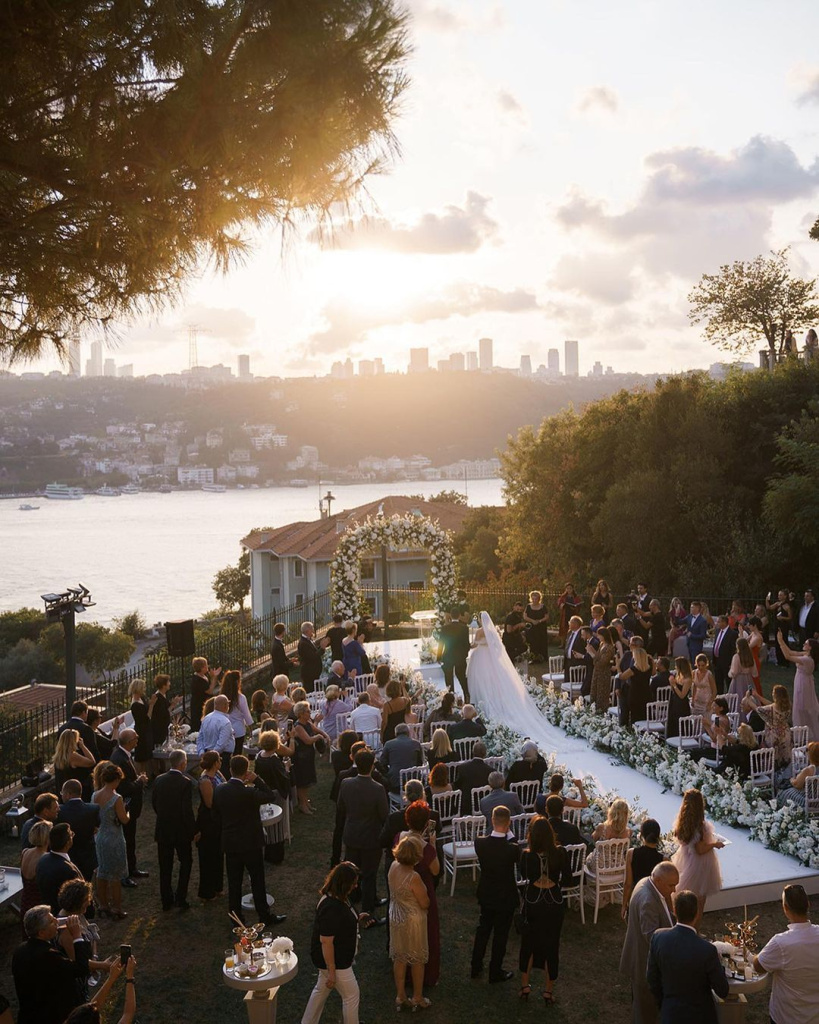
Breaking a Glass
While it is a common tradition in various cultures, in Italy, breaking a glass signifies the hope that the marriage will last as many years as the pieces of glass produced. At Lake Como, this could be done at a scenic spot where the echo of the breaking glass can reverberate against the surrounding mountains, adding a dramatic effect. Follow this moment with a toast using Prosecco from nearby vineyards to celebrate the breaking of the glass, linking this tradition to the rich wine culture of the region.
The Wedding March
Traditionally, the march is a community event, with the couple walking through the town to the church. For a Lake Como wedding, the march could be along the scenic lakeside paths, with stops at historical landmarks where local artists might perform or paint quick portraits. This not only immerses the guests in the local culture but also turns the journey to the altar into a tour of the natural and historical beauty of the area, creating lasting memories.
Millefoglie Wedding Cake
A millefoglie cake, assembled live, offers not just taste but theatricality to the wedding. The layers of delicate puff pastry, rich cream, and fresh berries can be layered by a chef in full view, explaining each step, and making the cake a narrative of its own. Consider flavors that resonate with the seasonal fruits of the region or local delicacies, like a hint of Italian liqueurs, to infuse local tastes into this visually captivating tradition.
Bride and Groom’s First Entrance
Making a grand first entrance is about setting the tone for the reception. At Lake Como, consider entering not just by any means but perhaps in a classic Riva motorboat, coming ashore to the applause of your guests lined along the pier, with fireworks lighting up the evening sky. This entrance captures the essence of Italian luxury and romance, leaving a lasting impression on your guests and setting a celebratory tone for the evening.
Italian Wedding Traditions: FAQs
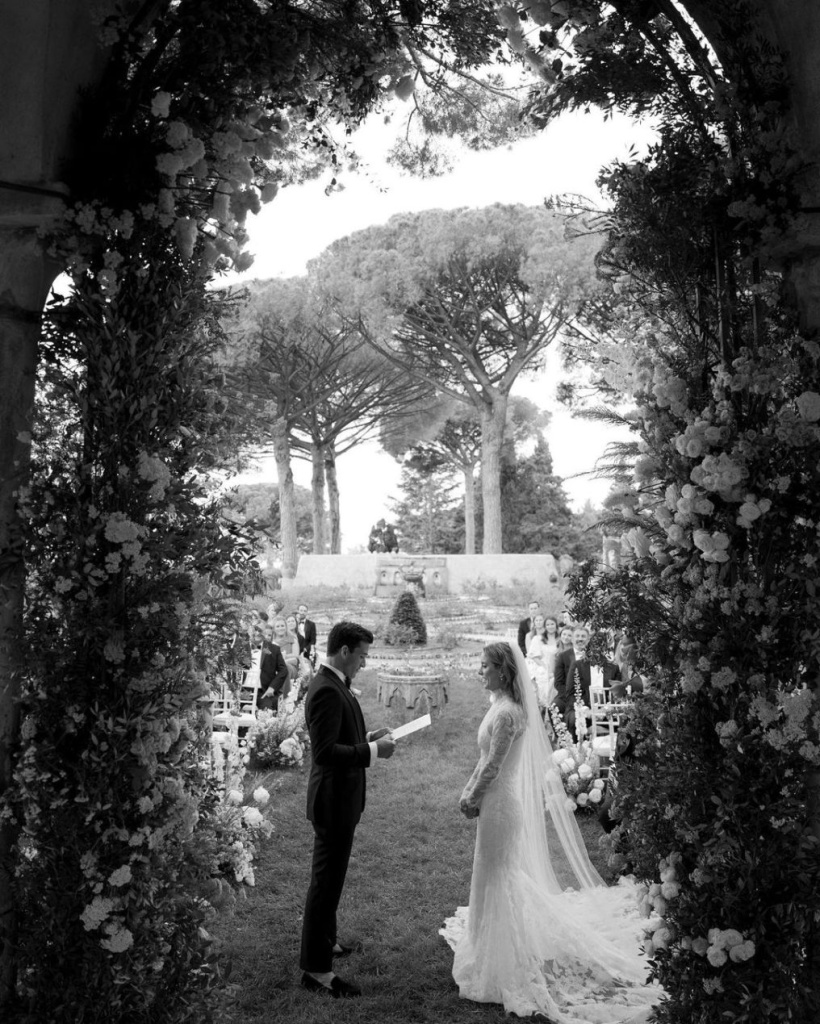
When planning a wedding in Lake Como and incorporating Italian traditions, couples often have several questions about how to best integrate these customs into their celebration. Here we answer some frequently asked questions that can help you plan a culturally rich and memorable Italian-style wedding.
What is the best month to plan a Lake Como wedding?
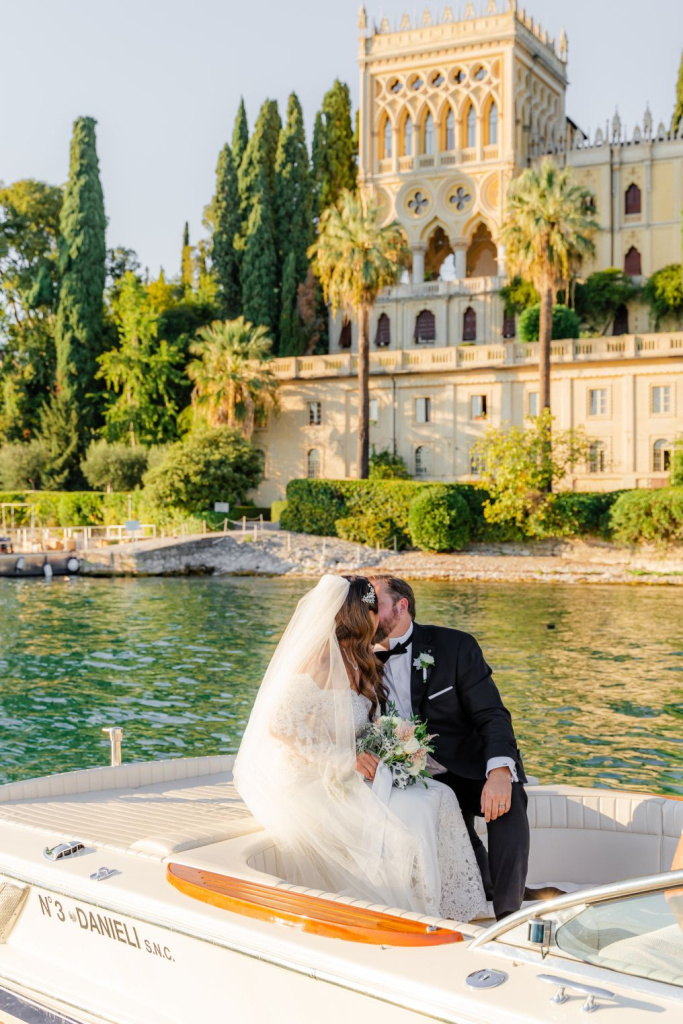
The ideal months for a wedding in Lake Como are May through October. This period avoids the chill of the northern Italian winter and the spring and autumn provide a mild climate with less rainfall and more sunny days, enhancing the outdoor experience. The natural beauty of Lake Como is also at its peak during these months, with blooming flowers in spring and rich, vibrant colors in autumn. Planning your wedding during this time allows you to take full advantage of the outdoor settings that Lake Como offers, from garden ceremonies to lakeside receptions, all under the romantic Italian sky.
How can I incorporate Italian music into my Lake Como wedding?
Italian music can add an authentic touch to your celebration, enveloping your special day in the rich sounds of Italy’s musical heritage. Consider hiring a local band that specializes in traditional Italian music, such as a folk band that can perform both classic and contemporary Italian songs. Another option is to hire an opera singer to perform during the ceremony or reception, which can be a breathtaking highlight. For a more intimate setting, a string quartet playing arrangements of famous Italian compositions can provide a sophisticated backdrop. Collaborate with your musicians to create specific moments within the wedding where their music will enhance the atmosphere, such as a serenade during the aperitivo or a lively tarantella dance to get everyone on the dance floor at the reception.
What are traditional Italian wedding dress codes?
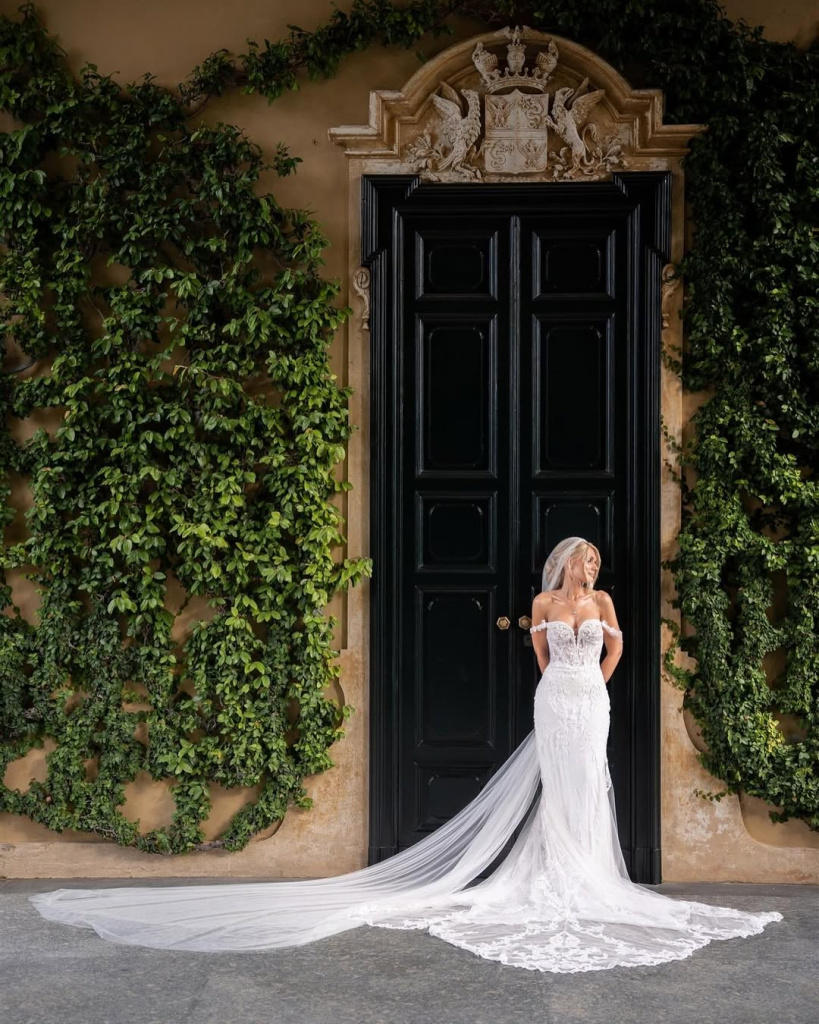
Traditional Italian wedding attire calls for elegance and formality. Guests are typically expected to dress formally, with men often wearing suits or tuxedos and women in evening dresses. The colors of the attire are also significant; white is reserved for the bride, and black, traditionally considered a color of mourning, is avoided. Instead, guests may opt for dark blue or grey, which are considered appropriate and stylish choices. To add a touch of Italian flair, male guests might consider adding a boutonniere with a flower matching the wedding’s color scheme, while women might accessorize with elegant hats or fascinators, particularly for a daytime wedding.
Are there specific Italian foods that should be included in the wedding menu?
An Italian wedding menu typically features a variety of local and seasonal ingredients, showcasing the richness of Italian cuisine. Start with a selection of antipasti, such as prosciutto, cheeses, and marinated vegetables. For the first course, a pasta dish like risotto alla Milanese or a lake fish risotto can highlight local flavors. The second course might include a meat or fish dish, such as osso buco or grilled seabass. Side dishes often feature polenta, a local favorite, or a fresh salad. For dessert, beyond the wedding cake, consider offering tiramisu or panna cotta, followed by a selection of Italian cheeses and fruits. Don’t forget to include a gelato cart or an espresso bar to round out the dining experience with beloved Italian desserts and drinks.
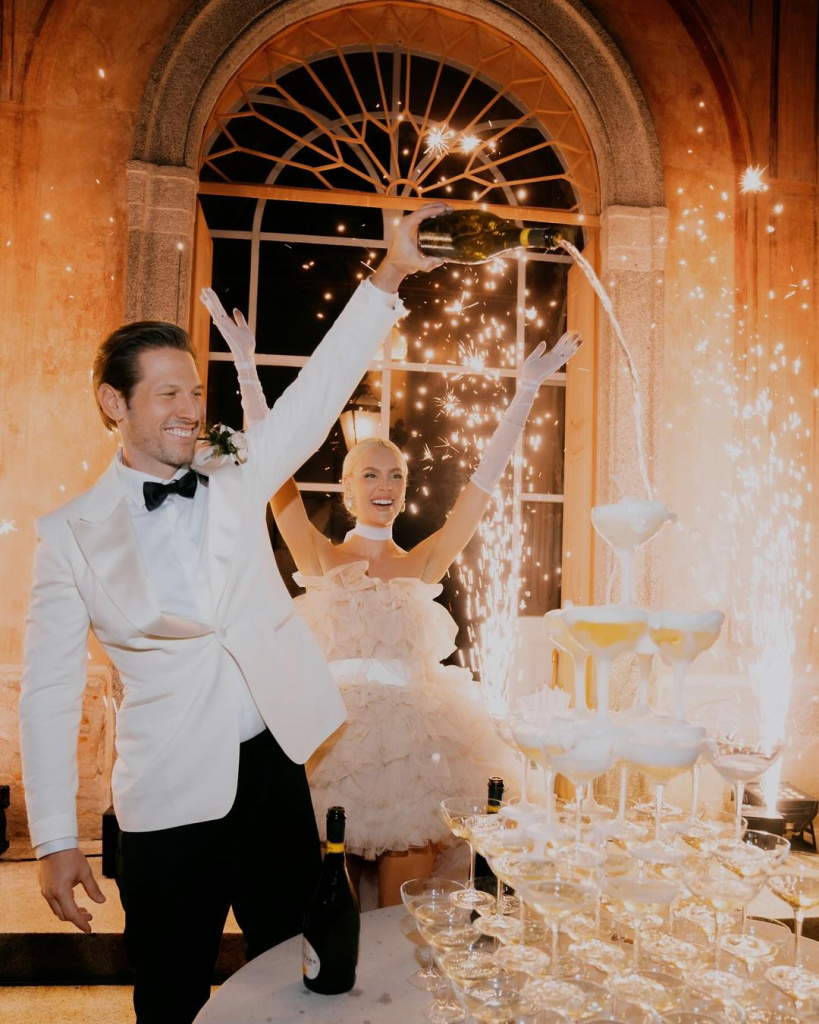
What is the traditional Italian wedding toast?
The traditional Italian wedding toast is made with Prosecco or spumante, Italian sparkling wines known for their light, bubbly quality. The toast is typically led by the best man or a close family member. It starts with a few words about the couple, often including anecdotes, well-wishes, and thanks to the guests for attending. The toast culminates with everyone raising their glasses and saying "Cin cin!" (pronounced "chin chin"), which is the Italian equivalent of "cheers."
How do Italian weddings typically conclude?
Italian weddings are known for their festive and lengthy celebrations. Traditionally, the wedding concludes with dancing and entertainment that can last well into the night. A popular feature is a live band or DJ playing a mix of Italian and international music. As the evening winds down, it’s customary to serve a late-night snack, which might include local specialties or even a simple serving of pizza, which helps to keep the party atmosphere alive and guests satisfied. The conclusion of the wedding is often marked by a grand gesture such as a fireworks display over Lake Como, creating a spectacular final memory of the evening.
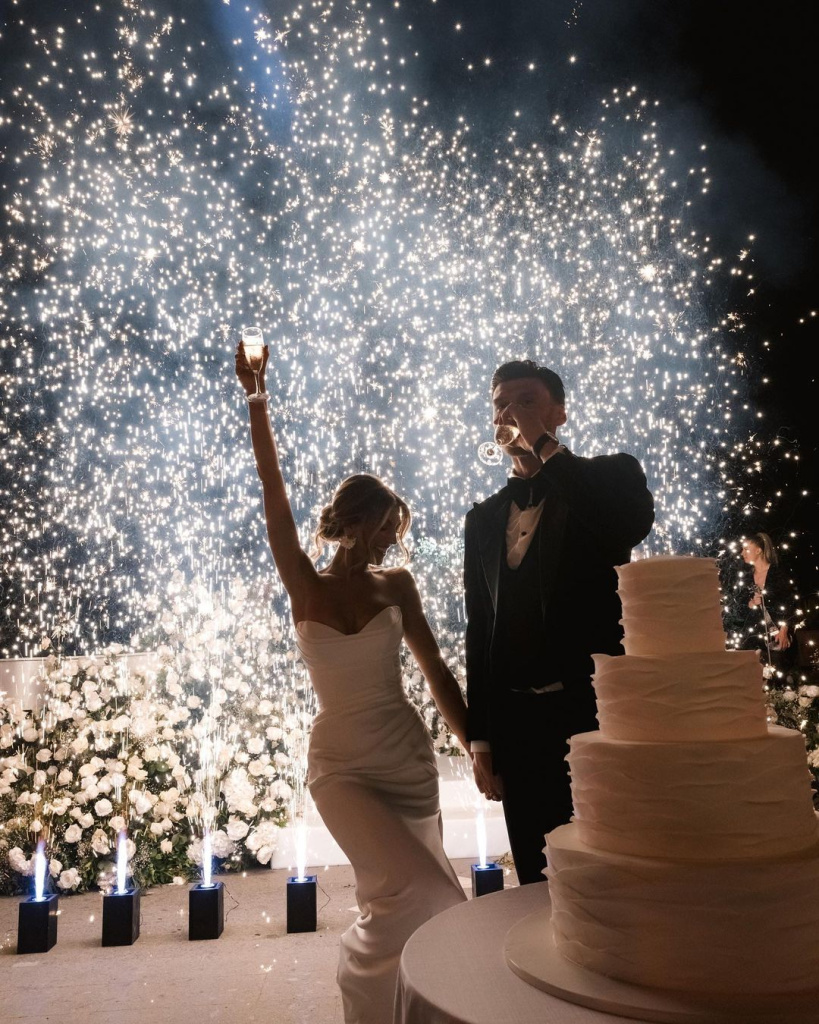
Is there a traditional dance at Italian weddings?
Yes, the traditional dance at many Italian weddings is the tarantella, which is a lively and upbeat folk dance. This dance is characterized by a fast tempo and is usually accompanied by tambourines. It is believed to bring good luck to the couple and their guests. The tarantella provides a fun and interactive way for guests to participate in the celebration, energizing the atmosphere and often leading to a night filled with dancing and joy.







